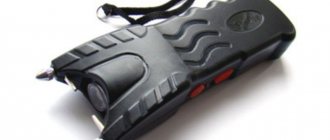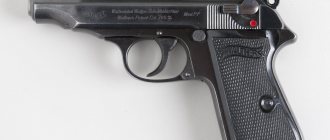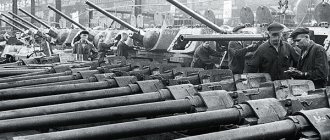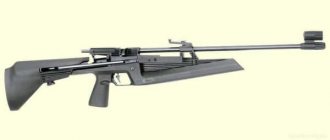Choosing the right binoculars is not an easy task. To ensure that buying binoculars in the future does not turn into an unpleasant mistake, you need to be thoughtful about choosing them.
Therefore, before going to the store, you should familiarize yourself with the main types and characteristics of binoculars.
Further advice from professionals will tell you how to choose binoculars that will suit your needs.
Category
When choosing binoculars, you should decide the purpose of its use. Because the choice will depend on this.
Now there is a huge variety of binoculars on the market for various types of activities:
- tourist,
- children's,
- hunting,
- theatrical,
- astronomical,
- marine,
- to observe nature,
- are common.
Binoculars for tourism
The standard magnification for tourist binoculars is 10–15x, and the optimal lens diameter is 42–50 mm.
The body should be light and compact, it would be good if it was rubberized. With the help of tourist binoculars you can conduct observation at any time of the day.
Children's
Children's binoculars are selected depending on age. For small children 6 - 9 years old, we recommend choosing those marked FF; their focus is already set and no more additional settings are required.
For older children, binoculars with focusing are already suitable; they will be able to adjust it themselves. It should be compact and lightweight. The recommended lens size is 30-35 mm.
Binoculars for hunting
They are used in hunting to monitor future prey. Hunting binoculars should be small-sized, with high aperture.
It would be good if they were equipped with additional functions:
- image stabilizer,
- rangefinder,
- altimeter,
- compass,
- thermometer.
These models should be quite durable; hunting is not an easy walk in the park; the body should preferably be rubberized, and the lenses should be glass. Magnification 4 – 8 times, lens diameter 25 – 40 mm.
It is worth paying attention to the choice of professionals: these are binoculars for hunting from Olympus Pathfinder series.
Opera glasses
They provide a direct image, are lightweight, and have a high aperture ratio. Lens size – up to 30 mm, magnification 2-5 times.
High magnification astronomical binoculars
For astronomy enthusiasts, an alternative to a telescope is astronomical binoculars. They are easy to use, functional and cheaper than a telescope.
Here you need a large lens diameter - 110 mm, and a magnification factor of 10 - 30.
Marine or tactical binoculars
These are military binoculars with special requirements that can also be used for fishing.
They must cope with their work in all weather conditions, so they have a moisture-resistant and rubberized body with maximum protection from fog, moisture and dust.
Waterproof to 5 meters, built-in rangefinder and compass, and nitrogen filling. The Olympus Magellan series marine binoculars fit these characteristics.
Binoculars for nature
They can have both high magnification and low magnification with a compact lens. It all depends on your preferences when observing wildlife.
Are common
These are the most common type of binoculars. They are universal and can be suitable for many purposes; they have average characteristics: weight, size, price.
Magnification level – up to 16 times, lens diameter 35 – 52 mm.
How to use
Modern binoculars are sealed and protected from moisture and sand, but you should still ensure that the optical parts of the device remain inviolable.
The resulting image is spoiled by fingerprints on the lens, grease, dirt, and dried splashes of water. Dust causes scratches on the glass, and such defects cannot be eliminated. Therefore, it is necessary to monitor the condition of the device, clean it using the correct methods and recommended products.
To protect your equipment from premature failure, follow these rules:
- Do not clean your binoculars unless necessary. Excessive exposure to lenses may result in accidental damage.
- Make sure that the optical glass is protected at all times. This will avoid exposure to adverse factors that can damage the lenses.
- It is strictly forbidden to wipe dusty glass with a cloth. Dust needs to be blown away. Ideally, purging is done using a can of compressed air. If you don’t have one, then a rubber bulb will do.
- After removing dust, you need to wipe the optical glass with a lint-free cloth soaked in a special liquid. Using circular movements, starting from the center and moving towards the edges of the lens. There is no need to press hard on the surface or make sudden movements - softly, smoothly and measuredly.
And most importantly, under no circumstances should you wipe the lenses with a hollow shirt, paper towels or napkins.
The material may be too hard and cause scratches. Refrain from using ethyl alcohol - it leaves streaks.
The body of the binoculars is cleaned with a brush, which needs to be used to go over all the depressions and recesses. Hard-to-reach places are cleaned with a cotton swab. After this procedure, the body is wiped with a damp cloth.
Today there is no shortage of choice of optical glass cleaning products. Companies themselves produce a set of anti-pollution products for their own products.
Magnification and lens diameter
Binoculars are designated by two numbers, for example, 8x42 or 20x60. The first number tells you how many times it magnifies the image.
There are several categories depending on the degree of magnification:
- Small magnification (3 to 5 times);
- Medium magnification (from 6 to 10 times);
- With high magnification (from 10 to 30 times).
Before choosing binoculars by magnification, you should first decide what you need them for. In a forest or other place with many visible obstacles (in the form of trees, bushes, buildings, etc.), you do not need binoculars with high magnification, and even with a magnification of 15x or more you will feel strong shaking.
The second number indicates the diameter of the lens, which is measured in mm and determines the aperture ratio. The larger the lens diameter, the better and brighter the image.
If you divide the second number by the first, you get the exit pupil value - the size of the transmitted image in the eyepiece. For observation in the evening, it is desirable to have an exit pupil value of 6 mm, and in daylight 3 mm.
Malfunctions and repairs
Optical glasses most often deteriorate and the cause of the malfunction is improper care.
The problem of mismatched images in eyepieces is a common problem - it arises as a result of careless use, which entailed a fall in the equipment and changes in the position of the prism.
Although the body of the product is durable, sometimes cracks appear on it, which adversely affect the optical properties.
As for self-repair, it is highly not recommended to begin correcting defects without special knowledge and tools:
- There is no guarantee that you will identify the cause of the breakdown.
- A disassembled device is no longer subject to warranty.
- After such self-repair, the binoculars will either lose their presentable appearance or completely become unusable.
Prism
There are two types of prisms - porro and roof. Roof prism binoculars have lenses and eyepieces on parallel lines. This makes it possible to make the binoculars smaller in size, but this often degrades the image quality.
Binoculars with porro prism have a larger distance between the lenses than between the eyepieces. They provide a more voluminous, realistic image, and are cheaper than their counterparts with a roof prism.
Cost of binoculars
It is quite obvious that the more expensive the device, the higher its quality . Of course, there are exceptions, but when it comes to binoculars, price matters a lot . However, it is difficult to name a low cost threshold for this device, since you can buy binoculars to suit every taste and budget. We suggest you limit yourself to, for example, 25 thousand rubles , since they usually don’t spend more on hobbies, however, for a good binoculars, 200 thousand is not the limit . For example, for this:
Frame
The quality of the case depends on various parameters:
- Shockproof indicator. This indicator depends on how rubberized the body is. This allows it to stay firmly in your hands and protects it from damage during falls.
- Moisture-resistant and waterproof. Water resistance protects the binoculars when splashed with water. And water resistance - when immersed in water to a depth of 5 meters.
- Anti-fog protection. The content of dry nitrogen inside the binoculars helps protect the lenses from fogging during large temperature changes.
Magnification or factor
The magnification in binocular markings is indicated by numbers before the “x” icon. It can be fixed: 7 x 30, 8 x 34, as well as variable (with the ZOOM function): 8-16 x 21. Optimal for field binoculars is a device with a fixed magnification of 6x, 7x, 8x or 10x (10x is the limit in which hand-held observation is possible). If the object is to be examined in more detail, then more than 10x will be suitable, but observation will be difficult due to image shake. In this case, you need to install the binoculars on a tripod. It should be taken into account that an increase in magnification leads to a decrease in aperture ratio; in order to eliminate this, the diameter of the lenses must be installed in larger sizes, and this, in turn, leads to an increase in the weight and size of the device, which will become more difficult to carry. Still, the practical significance of field binoculars is to recognize an object, and not to see it close-up, so you should not chase the magnification.
Binoculars for looking out the window
Many people ask which binoculars to choose for observing from a window, no matter for what purpose: observing the street, a stadium nearby (you can watch a match without leaving your home) or keeping an eye on the neighbors across the street.
To watch a football match taking place in a stadium, you need binoculars with a wide angle of view so as not to lose sight of the players; this characteristic is not important for neighboring windows.
The lens diameter should be 3-5 times higher than the magnification (for example: 10x30 is suitable, but 7x70 is not).
The main indicator is the multiplicity, which depends on the distance at which the object to be observed is located. The optimal magnification would be 20-30 times.
When observing from a window, there are several features, ignorance of which can create problems.
- Inability to focus. Some window glass creates focusing problems, so the best solution is to open the window when observing.
- If the magnification is greater than 10, the picture will jerk a lot, so you need a tripod or some kind of stand.
- The optics of binoculars have a lot of glare and the object of observation can easily detect that he is being followed.
For observation from home, the best option would be a monocular on a tripod with a magnification of 20x or more. For example: Carl Zeiss Victory DiaScope 20-75×85 spotting scope, its magnification can be changed from 20 to 75.
You should not skimp on the quality of binoculars, because in addition to a poor image, if you use them for a long time, you can get problems with your eyes; do not forget this is an optical device.
Pay attention to famous manufacturers. So Olympus binoculars are very high quality with a 25-year guarantee, however, their cost is not the least.
When your choice stops at several models, then conduct a comparative test on image quality from a distance of 80 - 100 meters, comfort when holding it in your hands, etc.
Thus, the choice of binoculars must be taken seriously. Following the above tips will allow you to avoid mistakes when choosing it.
Guarantee
The warranty includes free repairs and replacement of parts if defects are detected or malfunctions occur. The list of serviceable defects is shown in the warranty card.
The service life for binoculars varies from 1 year to tens of years. The latter is inherent in premium optical devices, the price of which is higher than standard ones.
It’s worth remembering: under no circumstances should you disassemble the device yourself unless your warranty has expired. Otherwise, the warranty card will be void. Follow the mandatory operating rules specified in the instructions.
The exact list of services provided, conditions for obtaining service and warranty period is individual for each model of an individual manufacturer.
HD Leica Ultravid Binoculars
These are ultra-compact binoculars, weighing only 565g, making them ideal for hiking. Leica is a brand known for its high-tech and optical performance. And since these binoculars are an HD series, the bar has been set even higher. Its lenses are equipped with a hydrophobic coating that makes them waterproof and dirt-resistant. It also features Teflon discs, making focusing easy even in extreme conditions.
Leica Ultravid HD binoculars are ideal for hiking, travel, sports and even for those who wear glasses. It's worth the investment for hiking binoculars.
These are just a few of the best hiking binoculars we've found, but we hope this list, as well as what we've shared, will help you find the perfect pair of binoculars for your next hike. Having the right binoculars will definitely give you more enjoyment in the outdoors.
Best Binoculars for Hiking
Hiking will make you fall in love with the great outdoors because you will be able to see the breathtaking scenery and amazing opportunities that nature has to offer. But you can make your hike better if you use binoculars. Binoculars will allow you to clearly see the lines on a distant ridge, as well as those birds you hear singing from the trees.
Just like hunters who need great binoculars for hunting, hikers also need the best binoculars for hiking. There are many binocular options on the market today, and finding the right one can be challenging. To help you find the perfect binoculars for your next camping trip, here are a few things you should consider.
- Weight:
For travelers, the weight of the binoculars is important so that they do not overwhelm their backpack. To be able to choose one with the right weight, you should also consider the diameter of the eyepieces. You need to make sure that the diameter is not too large because the thicker it is, the heavier the binoculars will be. - Optical characteristics.
It's true that high-performance binoculars are expensive, but they're worth it compared to bargain-basement purchases that are useless when you go camping. - Compact and waterproof:
Compact binoculars are the best for travelers because they can be placed in pockets or can be easily stored in a backpack. You can also wear them on your belt so you can easily grab them when you see a breathtaking view or when you want to watch animals. Additionally, hiking binoculars should be waterproof so that they are safe if you go hiking in the rain or snow. - Your Travel Profile:
Finally, the choice of binoculars will depend on your travel profile. If you are just practicing hiking or just taking a quiet walk in nature, small, heavy binoculars are suitable for you because they can offer you great viewing comfort. But if you are trekking in the mountains, you need to choose lightweight binoculars that are easy to carry.
To help you out, here are some of the best hiking binoculars we've found that we'd like to recommend.
Additional parameters influencing the choice of field binoculars
In addition to the main characteristics, field binoculars have a number of additional useful options that simplify the use of the device and make it as useful as possible:
- Nitrogen filling prevents glass fogging during sudden temperature changes;
- the waterproof case is not afraid of rain and short-term falls into water;
- Equipping with a rangefinder scale allows you to correctly calculate the distance to the object.
Do not forget that the best field binoculars for you will be the one that fully meets your needs, is suitable in terms of technical characteristics and suits the price.
We recommend that you contact the specialists of the Veber.ru online store, they will help you make the best choice of device! Back to list
Linear field of view and viewing angle
The value of the linear field of view is determined at a distance of 1000 meters. It is calculated by the distance from the rightmost to the leftmost point of the area visible through binoculars. The visible area is also expressed in degrees and is called the visual angle. Typically, field binoculars have a wide angle of view, for example, for a 7 x 35 device it is 8 degrees or 140 meters, and for 8 x 40 binoculars it is 7.5 degrees or 131 meters. This means that if you build an equilateral triangle with an apex of 8 degrees, then at a distance of 1000 meters the base will be 140 meters, and with an apex of 7.5 degrees it will be 131 meters. Such binoculars with a wide field of view are called wide-angle.
The larger the linear field of view and, accordingly, the viewing angle, the more valuable information you will receive. In this case, it is easier to monitor the area and track moving objects. The smaller the linear field of view and viewing angle, the greater the resolution of the device, which means you will see more details of the observed object. For field binoculars, the optimal values of the linear field of view are at least 105 meters and the viewing angle is at least 6 degrees.
Swarovski CL Binoculars for travelers
These are stylish binoculars that will allow any tourist to enjoy the lens without reproach. Because of its small size, you can take it anywhere. Although it is small, it will be able to give you a bright, clear and contrasty image. It also has a very comfortable handle, making it ideal for hiking.
The Swarovski CL Companion Traveler binoculars are completely waterproof binoculars and are also dustproof. These are great binoculars for outdoor use.
How to check the magnification of binoculars?
In this article, we will dwell in detail on some of the technical parameters of optical instruments, learn how the magnification of binoculars is determined, how to correctly read the numbers in the name, and also suggest the answer to the most popular question that worries novice observation enthusiasts, which binocular magnification is better.
Particularly demanding customers who doubt the parameters specified in the product data sheet can independently check the magnification of their optical device. To do this, you need to measure the diameter of the exit pupil and the diameter of the front lens, for example, using a caliper or an ordinary school ruler. Then, by dividing the lens diameter by the exit pupil diameter, we get the actual magnification of the binoculars. This figure may differ from real figures, especially on inexpensive optical devices made in China.
Vote
Which binoculars do you think are the best?
Sturman 14×32
5.62 % ( 5 )
Spectrum 10x25
3.37 % ( 3 )
WYJ04-01 Good purchase
1.12 % ( 1 )
Eschenbach Viva 6x15
3.37 % ( 3 )
Bresser Scala 3×25 MPG
0.00 % ( 0 )
KAMEEL 3x25
1.12 % ( 1 )
Veber Eureka
1.12 % ( 1 )
Edu-Toys BN009
6.74 % ( 6 )
Canon 15x50 IS
29.21 % ( 26 )
Nikon Aculon A211 10x50
33.71 % ( 30 )
E tech blog
Choosing binoculars can be incredibly confusing for beginners and hobbyists alike. The best way to evaluate the optical performance and ease of use of binoculars is to go to a store and try out at least a few different models. But before that, it might be a good idea to learn the basics. Let's answer some common questions.
How to choose binoculars?
The best binocular models
Let us introduce you to some of the best binoculars you can find on the market.
Find out the price
These binoculars are designed for general use and are large in size. Its optical design is roof type. Offers 12x optical zoom. The eyepiece diameter is 4.1 millimeters and the reflectivity is 50 millimeters. Field of view 82 meters.
Find out the price
This is a full-size and at the same time quite compact binoculars. The optics are built according to the Roof type. Has a multi-layer anti-reflective coating. Its multiple approximation is 10x. Lens diameter 42 millimeters. The minimum focusing distance is 5 meters. The eyepiece reflex is 10 millimeters. Field of view 87 meters. It weighs 652 grams.
Find out the price
These binoculars are suitable for astronomy and come in standard sizes. Its optical design is roof type. Has full anti reflex. Its optical magnification is 10x. Lens diameter 42 millimeters. Can be used at a distance of at least 13 meters. The eyepiece reflex is 56 millimeters. Field of view 70 meters. Model weight 650 g.
Find out the price
The model is intended for general use and is large in size. Optical design porro. Lens diameter 21 millimeters. Zoom ratio 10x. Field of view 101 meters. Binoculars weight: 830 grams.
Find out the price
The binoculars are suitable for general use and come in standard sizes. The optical design it uses is porro type. Multilayer coating with anti-reflective layers. 20x optical zoom. The lens diameter is 50 millimeters, and the eyepiece reflex is 12 millimeters. Its field of view is 143 meters. Its weight is only 810 grams.
Find out the price
This is a universal model that will help out in many situations. The binoculars have a roof type optical design. It can be successfully used in any weather thanks to its waterproof housing. Has 8x zoom. Lens diameter 42 millimeters.
Find out the price
These binoculars are suitable for general use and are large in size. Features a porro optical design. Provides 25x optical zoom. The diameter of its lens is 70 millimeters, and the diameter of the eyepiece is 2.8 millimeters. The minimum viewing distance through it is 23 meters. Field of view 47 meters. It weighs 1.4 kg.
What do the numbers in the name/model/specifications of binoculars mean?
What do the numbers in the name/model/specifications of binoculars mean?
Find out the price
Usually in the name or model of binoculars (and sometimes in the characteristics themselves) you will come across some numbers that most likely will not tell you anything.
The first number determines the power of the binoculars (zoom), and the second determines the size (lens diameter). Accordingly, 8x42 binoculars are read as such with a magnification power of 8 times and a lens diameter of 42 millimeters.
Lens size also gives you an idea of how physically large the binoculars are and how much light they can collect. Once you get used to recognizing these numbers and how they affect the way you see through your binoculars, you'll know exactly how to choose the right model for what you'll be using them for—watching birds, stars, big fish, or even boats.
Why can binoculars with similar characteristics have different prices?
Why can binoculars with similar characteristics have different prices?
Find out the price
The answer to this question is very simple - on paper two different models may seem the same, but in reality they are not. It can be made with much better materials, use much better lenses and the like. It's things like these that cause the difference in price.
What else can you consider when choosing binoculars?
What else can you consider when choosing binoculars?
Find out the price
The durable coating on the outside of the binoculars is a plus. It is also good to have rubberized parts for better grip and less chance of falling. In some cases, waterproof binoculars will be your best choice. Likewise, you may want a model that doesn't blur. Accessories like the ones listed and which you choose will depend entirely on how you will use the binoculars and what your budget is.
How to choose binoculars for a specific use?
How to choose binoculars for a specific use?
Find out the price
Even if you don't know anything about binoculars, if you know what you'll be using them for (eg astronomy, bird watching, etc.) this can narrow your criteria considerably. Zoom and lens size are your starting point, but be sure to add additional factors.
Binoculars for hiking and climbing
Since the space in a backpack is not unlimited, everything that is placed in it matters. Therefore, you will need a more compact pair of binoculars with an 8 to 10 power magnification and an objective lens diameter of about 28 millimeters. 8×25 binoculars will do; 10×25; 8×28 and 10×28 would be great choices. A model with a rubber coating on the outside will be more durable than a regular one. It's also a good idea to consider water resistance because you won't have to worry about using it in wet weather.
Bird watching binoculars
For this purpose, you are unlikely to be so concerned about the size of binoculars, so you can look for medium and large models. Particularly preferred binoculars are 8×32 and 8×42. While 10x magnification can be useful for spotting small birds, 8x models will give you a wide field of view, which is key to identifying birds with ease. Again, it's worth considering waterproofing so you can use it safely at all times. There are also models that do not blur when moving from warm to cold air.
Binoculars for safari, observing wildlife animals
The preferred models for these scenarios are 8×32; 8 × 42; 10×32 and 10×42. If you plan to observe animals from a distance, choose binoculars with 10x magnification. If you want something more compact, then choose a model with a lens diameter of 32 millimeters instead of 42.
Water sports binoculars
If you enjoy water adventures like canoeing, etc., you will probably want binoculars with lower magnification. So choose something with 8x or less magnification. It is imperative to choose a waterproof model for obvious reasons. Typically, 8×32 binoculars are most suitable.
Binoculars for stargazing
In this scenario, you should look for binoculars with maximum magnification. Larger sizes are recommended, such as 10×42 and 10×50. You may also need a tripod to keep the binoculars stable.
Technical characteristics of binoculars
Technical characteristics of binoculars
Find out the price
Size
To make it easier, we will divide binoculars into three size categories - compact, mid-size and full-size. Size refers to the diameter of the lens, which means that models that appear to be the same size can differ significantly in weight and volume.
Compact binoculars: their lens diameter is less than 30 millimeters. These include 8×25 models; 10×28 and the like.
Medium-sized binoculars: Their lens diameter ranges from 30 to 40 millimeters. Sample models 10×30; 8×32 and the like.
Full-size binoculars: their lens diameter is more than 40 millimeters. These include 8×42 models; 10 × 50 and others.
If you are going to keep binoculars in your backpack, then a lightweight and compact model will be most suitable. Medium-sized models can offer you a clearer picture and are more comfortable for long-term use. This may not be the case with full-size models, as many people find them too heavy to hold for long periods of time.
Approximation
Most often, binoculars with 8 or 10 zoom are chosen, although there are also models with larger or smaller ones. 8x magnification binoculars have a wider field of view. Models with 10x magnification offer closer, more detailed images. According to the 8×25 type model; 8×32 and 8×42 will offer you the same approximation. The object to be observed will appear 8 times closer than it actually is. And even if you think that getting closer is always better, it's not true. The closer you get to the subject, the more your hands move, and the more difficult it will be to keep the image clear and without unnecessary movement. Now imagine what would happen if you were on a boat and looking through binoculars, or if you were walking.
line of sight
The approach also directly affects the field of view. Less zooming means a wider field of view and vice versa - more zooming leads to a narrower view. A narrower field of view will make it more difficult to find smaller and moving objects. Less light also passes through it, causing the image to appear darker. Since other factors such as eyepiece design also play a role in field of view, always check what the manufacturer offers. Typically, the field of view determines the width of the area you see when looking through binoculars at a distance of 900-1000 meters from you.
Lens diameter
It determines the amount of light the binoculars can collect. Thus, two binoculars with the same characteristics, but different lens diameters will be radically different. Having a large diameter lens will collect more light and provide a bright image. Keep in mind that binoculars with better optics may also produce brighter images.
Eyepiece reflexivity
Simply put, the higher the number, the brighter the image. More millimeters of display means better visibility in low light and a more complete image, even when you move your hands. Millimeters of eyepiece reflectivity are obtained by dividing the diameter of the lens along the path of approach. For example, in 8×42 binoculars, we divide 42 by 8 and get 5.25 millimeters of reflectivity. This shows the size of the light beam that reaches the eyes, whose pupils have a diameter of 2 mm in bright light and 7 millimeters in complete darkness. In low light, a reflectance of 5 millimeters or more is recommended. At dawn, evening or in the forest, using binoculars with a more reflective eyepiece can make observations easier. If you're going to be viewing in bright daylight, the reflectivity of the eyepiece doesn't matter much because almost all binoculars have it greater than 2 millimeters.
Lens materials and coatings
Lens materials and coatings
Find out the price
It is in this regard that you can see the modern technology built into binoculars. Glass composition and lens coating can reduce reflection and greatly improve the clarity and brightness of images. But to find out if this applies to a specific pair of binoculars, it's best to try it in person. This will give you an idea of what to expect from the device.
Binocular protection
Binocular protection
Find out the price
Waterproof and weatherproof
If you will only use binoculars outdoors or while near and in water, then be sure to choose a model with appropriate protection. It's also useful to know that there are different water resistances - some binoculars are resistant to splashes or light soaking, while others can be kept underwater at a certain depth without doing anything. Therefore, waterproof binoculars should not be immersed in water without making sure that they are protected. It can only withstand weather conditions such as rain, sun, cold, etc.
Rubber cover
Provides better grip and reduces the risk of falling. It also protects the binoculars from light impacts, but is unlikely to help you if you fall from a height. If you intend to use your binoculars in harsh outdoor environments, it is advisable to choose a model made specifically for this purpose.
Binoculars that don't blur
When transitioning from cold to warm air, regular binoculars will blur. Not only is this unpleasant, but it can also damage it if moisture gets inside the optics. This is why many models on the market are not overshadowed. In them, the air between the lenses is replaced with nitrogen, which does not contain wet particles and therefore condensation cannot form. Please note, however, that this protection is intended for the interior surfaces of the binoculars. External parts cannot be protected from fogging and condensation for obvious reasons.
Focusing
Most binoculars have a central control that focuses on both lenses. Some have independent focusing, allowing you to adjust each lens separately and thus compensate for visual differences in each eye.
Testing
It is better to go to the store and personally test several models of binoculars that you have previously settled on. Check how easy the device is to focus, whether it is convenient to use the device, how you can see through it - clarity and brightness, etc. If you don't have the opportunity to try it on site in a store, a compromise is to read as many user reviews online as possible. But even then, don't trust blindly and, if possible, order from an online store where you have the opportunity to return the binoculars if you don't like them.
More articles:
- How to choose a meat grinder? Top 7 best meat grinders
Choosing binocular magnification - advice from professionals
Listening to the opinions of people who use instruments from the world of observational optics every day, we came to the conclusion that it is better to abandon the search for universal binoculars for any situation, and choose an optical instrument based on specific observation conditions. So, for example, in order to introduce a child to the wonderful world of stars and planets, you should choose binoculars with high-quality optical glasses and a magnification of more than 20x, and for observations in cramped urban conditions, optics with a magnification of up to 10x will reveal their charms.
If you are not well versed in the technical intricacies and functionality of optics, and also do not understand what magnification of binoculars to choose, you can seek professional advice from our specialists. Call us on our toll-free number or request a call back. We will contact you promptly and help you choose the right optics for your specific tasks, and within the next weekend you will be able to see the world with a completely different look.











